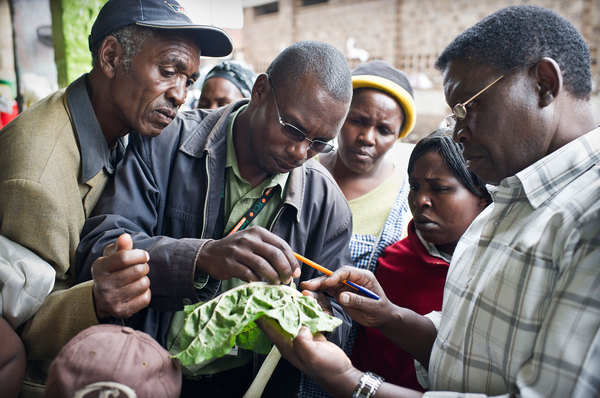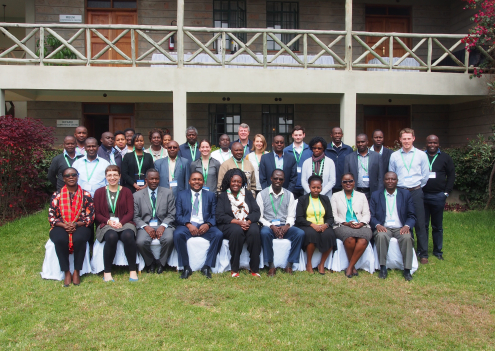Test your plant health knowledge with the plant doctor quiz
Plantwise plant doctors are at the heart of our plant clinic network providing advice and information to farmers, logging their data for the Plantwise Knowledge Bank, and always adapting to new outbreaks and technologies. Think you’ve got what it takes to be a plant doctor? Take our online quiz and find out!
New study shows that bacteria can be engineered to create their own fertilizer using air
Researchers have successfully engineered bacteria to use nitrogen at night to create chlorophyll for photosynthesis. This new development could reduce the need for human-made fertilizers on agricultural crops, thus reducing the cost and manpower required for fertilizer application.
Update: New Pest & Disease Records (07 August 18)
We’ve selected a few of the latest new geographic, host and species records for plant pests and diseases from CAB Abstracts. Records this fortnight include the first report of avocado sunblotch viroid (ASBVd) naturally infecting avocado in Greece, the first report of Dasheen mosaic virus infecting taro in Ethiopia and the first record of Cryptochetidae…
PRISE: Kenya Stakeholder Workshop July 2018
Earlier this month, members of the Pest Risk Information Service (PRISE) consortium held a stakeholder workshop in Kenya to update partners, donors and stakeholders on the progress of the project and to discuss future developments over the next four years.
Update: New Pest & Disease Records (19 July 18)
We’ve selected a few of the latest new geographic, host and species records for plant pests and diseases from CAB Abstracts. Records this fortnight include the first report of thrips from India, the description of a new species of PolycestaDejean from Chile and a report on the causal agent of leaf blight on sunflower in…
TerraSentia: the automated crop monitoring robot
A team of researchers from the University of Illinois have developed a completely automated robot capable of monitoring crops in the field during growth periods with the aim of aiding crop breeders in the extensive task of developing and comparing plant cultivars.
Madagascan bananas may soon be extinct
Bananas we buy across the world could be threatened with extinction in the future. This claim is due to the decline of wild banana species which could be the last resort for saving the world’s most popular banana, the Cavendish.
Environmentally Friendly Insect Repellent for Agriculture
A team of researchers from the Technical University of Munich (TUM) have developed a biodegradable agent that repels insect pest activity amongst crops without the use of insecticide chemicals.
Rallying around plant health in Jamaica
The Rural Agricultural Development Authority (RADA), Research and Development Division (R&D) and Plant Quarantine Produce Inspection (PQPI) – all agencies of the Ministry of Industry, Commerce, Agriculture and Fisheries of Jamaica – teamed up with CABI Plantwise to prepare the first of a series of rallies on different plant health topics. A two-day workshop was…
Investing in smallholder farmers for a food-secure future
Smallholder farmers provide the vast majority of the world’s food supply, and ‘small-scale farming’ is the largest occupation group of economically active people, 43% of which are women. Approximately 2 billion of the world’s poorest live in households that depend on agriculture in some form for their livelihoods, whether this is for market or subsistence.…





